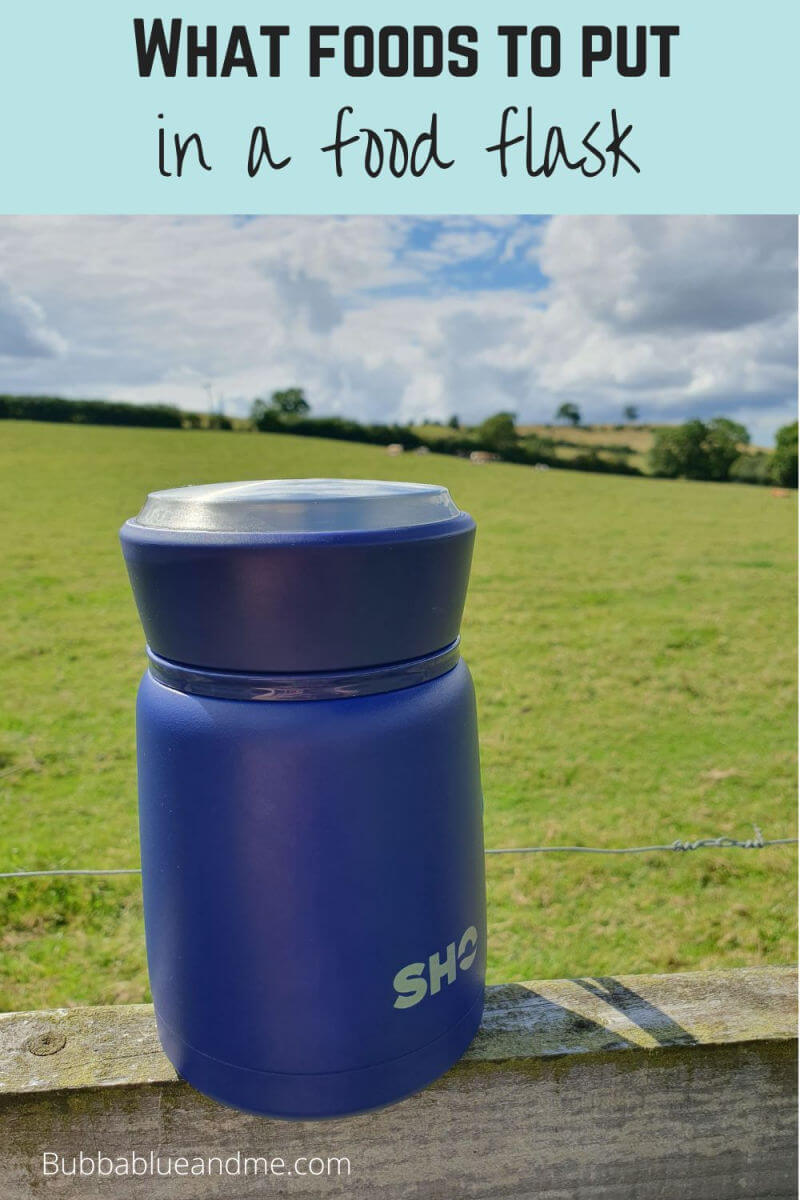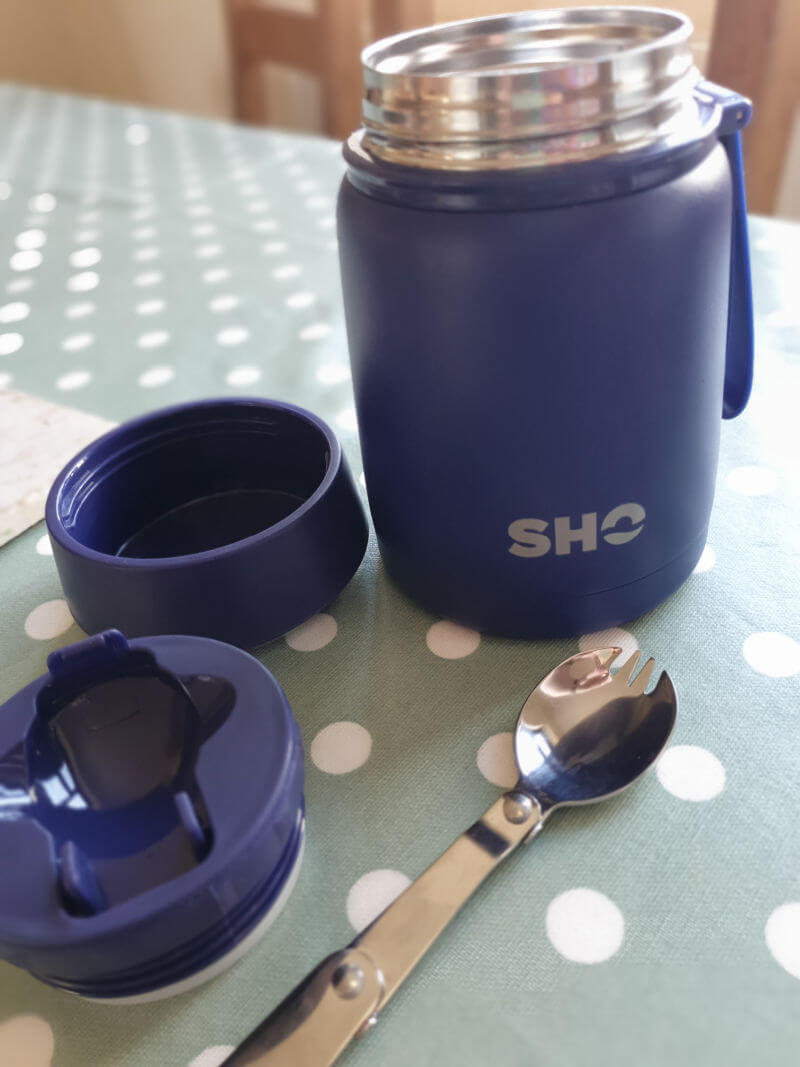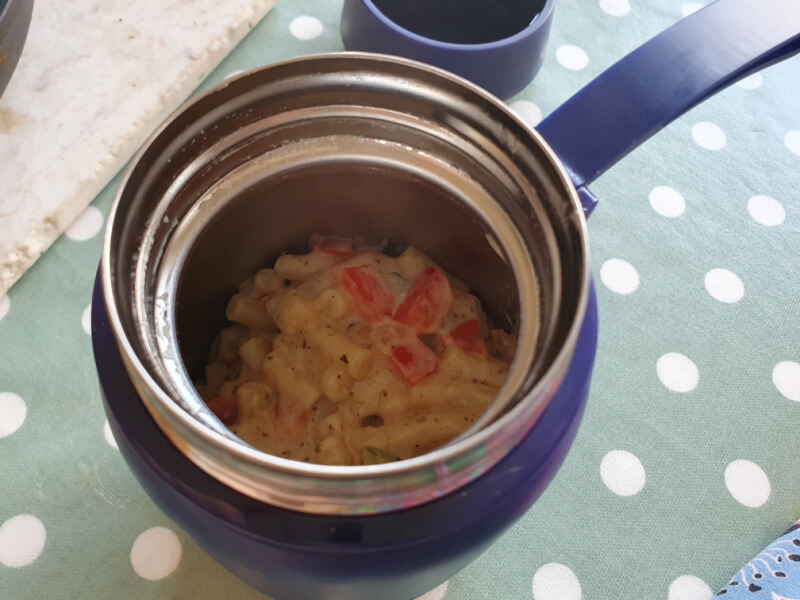What foods to put in a food flask – a food flask guide
Obviously the internet was listening to me talking about taking food out on days out or warm food for lunch, because last year all I was seeing was lots of social media ads for food flasks. I do love a nice lunchbox or flask, so decided I’d try one, buying a Sho food flask. If not for me when I’m in the office, for N to try for school lunches over the winter when he wants something more than sandwiches. Then came the decision on what foods to put in a food flask (or food jar if you’re in the US).
I did quite a lot of research working out what was going to work well, and having used flasks for hot drinks with no issues, I was confident that food flasks are a great option for those wanting to cut costs of eating out all the time when you’re out about about or working. I think having 1 good hot meal in a flask can be a better option than all the little bits and pieces you want in a cold lunchbox.
So here’s my food flask guide.

*Ad – contains affiliate links
What is a food flask?
If you’ve ever used a thermos flask for hot drinks, then a food flask keeps food hot in the same way. The method used is a vacuum, with 2 flasks, one inside the other, which helps with insulation, and hence keeping liquid or food inside hot (or cold). You pre-warm the flask, then empty and add the hot food. Close it up, then enjoy later.
Food flasks have a wider mouth than a drinks flask to ensure you can put utensils in and lift the food out.
Many hot food flasks come with a fork included. Our Sho one has a foldable metal fork that attaches to the lid. There’s also an added top too which can be used as a mini bowl or dish.

Benefits of a food flask
Using a food flask is really versatile. Not only can you keep food hot through the day – most keep food hot enough for up to 5 or 6 hours, but you can also keep cold food cool as well.
Unlike in an office where there’s often a microwave to heat food up, there’s no facilities like that at school. So once you’ve bought the flask, it’s cheaper than buying hot school lunches for them daily. Plus it means it’s faster for them to get back to playing football. Rather than standing in a canteen queue for ages.
You can take a food flask with you pretty much everywhere you go. Going out for the day, have everyone take their own food flask with them. They’re great for a winter walk or picnic stop. And much cheaper than having to buy lunch out.
They’ll help you reduce food waste – just use them for leftovers. A quick heat up in the microwave before you pop the food in the flask, then you’re set to go.
You can get different size food flasks, so for children there are smaller ones around 300ml in size, while if you want to share the food you might want to go right up to an 800ml.
Want ideas for family days out in the UK, then check out my days out page which includes a map.

How to use a food flask
In the same way you’d use a flask to keep a drink hot, you want to prep it before putting the hot food inside. It’s as easy as pouring boiling water into teh flask, putting the lid on, then waiting for 10 minutes until its helped warm the flask inner up.
Then tip out the water, and add the hot food. You want to fill it nearly to the top, then screw on the lid securely.
Food should stay hot for long enough. But do check with the instructions on your flask to make sure you’ve got the timings right, because you want the food to still be hot enough to be safe (or remain cold enough if you’re storing cold food ready to eat.
What foods to put in a food flask?
All in one meals work brilliantly. Leftovers are great for food flasks. Rice works particularly well but do make sure it’s well heated through. You’d probably heat food hotter than you would if heating at home to make sure it’s still hot hours later.
- Soup – especially a chunky soup like vegetable, chicken noodle or minestone
- Chilli con carne – layer with rice and chilli so you mix up the mouthfuls
- Pasta bolognese – again mix the meat sauce in with the pasta. You can add cheese on top from a separate container, otherwise it would melt in.
- Macaroni cheese
- Lasagne – add it to the food flask in cut up chunks to make it fit and easier to eat with a fork!
- Meatballs in sauce and rice
- Sausage and beans hotpot – chop up the sausages before reheating and adding to the flask
- Chicken casserole – keep all your pieces similar size when dicing the veg and potatoes.
- Stew – pretty much any kind
- Chicken curry with rice
- Daal – lentils curries. Add chopped up cooked potatoes or cauliflower to add more bulk and mix of textures.
- Biryani – good rice dish to add.
- Scrambled eggs with some spring onions chopped up, cooked bacon chopped up too makes a decent breakfast. Add a bagel or nice roll on the side.
- Risotto – any type works well, just make sure it’s well heated, and either fresh or only a day old.
- Porridge – add fruit once you’re ready to eat, or mix it in
- Shepherds pie – you might need to layer it, mince then mash potato, mince then mash so you don’t just get all potato at the top.
- Fajitas or burritos – pre-wrap them in foil to keep them wrapped and help keep them warm inside the flask. Or you can just keep the filling warm and eat either alone or make up the wrap when you’re ready for it.
- Hot dogs – heat them up in the brine, pour all into the flask, then drain and add to hot dog rolls when ready to eat.

Cold foods
You can also keep food cold in a food flask, and this should work for longer than keeping food hot.
- Pasta salad
- Salads: grain salads (like bulgar wheat, couscous etc with vegetables in), or green salads. Just keep the dressing separate to avoid too much sogginess.
- Noodle dishes or salads work well.
Puddings
- Apple crumble
- Rice pudding
- Sponge and custard – have the custard in the flask, then add the sponge to the when ready to eat to avoid it going soggy.
- Fruit salad
- Yoghurt and granola parfait

What to consider when buying a food flask
We’ve got a Sho food flask, in a 530ml size. But there’s plenty of others out there – just look at how long they claim to keep food warm, and cold, any guarantees they have in case something goes wrong. And don’t forget to check reviews.
It’s also worth thinking about how easy they’re be if you’re used a food flask for children. You don’t want them struggling to open the lid, but they still need to be able to be securely closed.
A wide neck is crucial too for getting a fork or spoon in, and the food out without spilling it. If you’re just using your food flask for soup, you might want to decant the soup, find a flask opening that’s a bit narrower to be able to drink out of it, or choose a really wide mouth one to be able to lift the spoon out flatter.
Here’s some of the recommended brands that have good reviews. I think they’re great for gifts – for Christmas in preparation for Christmas light trail visits, for new job or graduation congratulations, or house warming presents.
- Contingo food flask* – good for kids, although it’d be nice to have other designs.
- Sho food flask* – lots of colours so good if you’re getting some for family members
- Thermos King flask* – well known brand that’s reputable and knows its stuff.
- Hydroflask food jar* – if these work as well as their drinks flasks, then they’ll do a great job for food.
If you have one, what types of foods do you put in your food flask or jar?

I always just assumed people put food in drink flasks. I didn’t know there were proper food one’s. What a handy thing. I imagine them being brilliant in the colder months. x
Yes, great for days out to keep kids going if there’s no cafes around